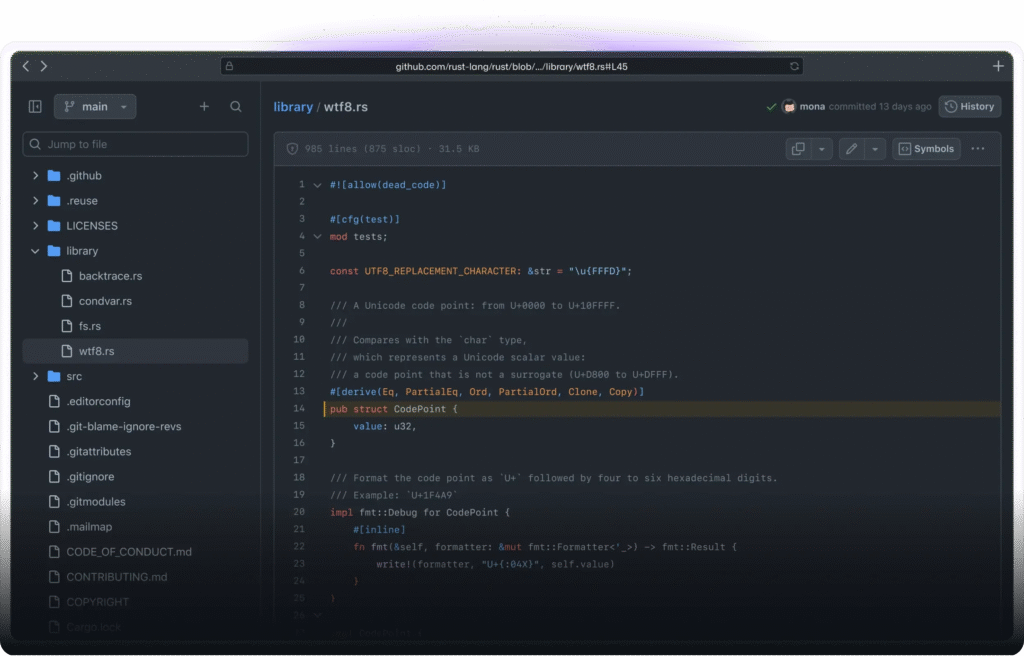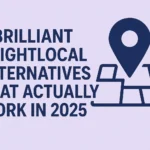Let me be straight with you—I didn’t always love GitHub. In fact, the first time I landed on github com I thought I’d accidentally opened the dark web of programming. Branches? Pull requests? Forking? (That one sounded a bit aggressive, if you ask me.)
But fast forward a few years, and now I use GitHub almost daily. Whether I’m contributing to open-source projects, collaborating with coworkers, or just storing my silly side projects like a “smart toaster”, GitHub is the backbone of my code life. And trust me, if you’re even remotely interested in software, tech, or just not losing your work in a hard drive crash again, GitHub is something you’ll want to wrap your head around.

In this guide, I’ll take you through seven unexpectedly awesome ways GitHub.com changes how we build and manage code—plus practical tips, beginner insights, and all the stuff I wish I knew sooner.
What Even Is GitHub.com?
Let’s break it down.
At its core, GitHub.com is like a social media platform—but for code. Think Facebook, but instead of selfies and vacation pics, people share codebases and bug fixes.
More technically:
- It’s a web-based platform for hosting Git repositories.
- It uses Git, a version control system invented by the same guy who made Linux (Linus Torvalds—yep, that dude).
- It allows teams or solo devs to collaborate on projects without overwriting each other’s work.
So when you hear someone say “push that to GitHub” or “check my repo,” they’re talking about uploading code to GitHub.com.
1. Version Control Without Tears
Ever had a document named something like final-final-v3-REAL-final-this-one.txt? Yeah, version control is a mess when done manually.
GitHub (powered by Git) lets you:
- Track every single change you or your team makes
- Revert back to any earlier version
- Work on features or bug fixes without breaking the main product
So instead of praying you didn’t just overwrite two weeks of work, GitHub keeps a neat little record of everything.
Pro tip: Learn the basic Git commands—git init, git commit, git push, git pull. It’s like learning the controls of a video game. Awkward at first, but soon you’ll be speedrunning commits. github com
2. Collaboration That Doesn’t Make You Want to Cry
Back in the day, working with someone else on code meant emailing .zip files or using USB drives like it was 1998. GitHub changed all that.
On GitHub:
- Multiple people can work on the same project at the same time
- You can create branches to experiment without wrecking the main code
- Submit pull requests to propose changes
- Have conversations directly inside code reviews
It’s like Google Docs for code—but way cooler.
Funny thing?
My first team project on GitHub was chaos. We all pushed to the same branch at the same time. Conflicts galore. But once we embraced pull requests and branches, everything clicked. github com
Pro tip: Always make a new branch for new features or fixes. Always.
3. Transparency & Accountability in Open Source
Ever wonder how open-source software doesn’t descend into absolute anarchy? GitHub’s structure is part of the answer. github com
You can:
- View commit histories to see who changed what (and when)
- See who reviewed or approved pull requests
- Raise issues to report bugs or suggest features
- Watch how maintainers respond (or ignore you… no shade)
There’s a paper trail for everything, which is huge for building trust in projects. github com
And if you’re an aspiring dev looking to break into open source, this transparency is gold. You can literally study how veteran developers write and review code. github com
4. Your Portfolio, But Better
Forget PDFs and bullet-point resumes—your GitHub profile is your real-life proof of skill.
On GitHub.com, your public activity shows: github com
- Projects you’ve worked on
- Contributions to other people’s code
- Stars, followers, and forks (kind of like likes, shares, and retweets) github com
If you’re job-hunting as a developer, a solid GitHub profile can be more impressive than a degree. And hiring managers? They will Google your GitHub. github com
Pro tip: Pin your best projects on your GitHub profile. And write good README files—it’s like the cover letter for your repo. github com
5. GitHub Actions: Automation FTW
Alright, let’s get a little nerdy for a second. GitHub Actions is one of the most underrated features, especially for solo devs. github com
It lets you automate stuff like:
- Running tests every time someone pushes code github com
- Deploying websites or apps automatically
- Sending alerts if something breaks
Example: I set up a GitHub Action to deploy my portfolio site to Netlify every time I commit to the main branch. Took me 10 minutes to set up. Now I never think about it again. github com
If you’re not automating yet, you’re working too hard.
6. Global Community, Real Impact
GitHub.com isn’t just a tool—it’s a massive global community.
As of 2025, GitHub has:
- 100+ million developers
- Billions of repositories
- Projects in nearly every language imaginable github com
From indie game devs in Brazil to data scientists in Finland, people use GitHub to build everything from AI models to Minecraft mods.
Want to contribute to something bigger than yourself? Join an open-source project. Even fixing a typo in a README can get your foot in the door. github com
7. Learning by Doing (and Failing)
This might sound corny, but GitHub taught me how to fail. And honestly? That’s where the growth happened.
When you push broken code, you learn debugging. When your pull request gets rejected, you learn humility. When you finally merge your first contribution? That little green checkmark hits like a dopamine rush. github com
Don’t be afraid to start messy.
- Make a test repo and play around
- Clone cool projects and break them
- Ask dumb questions (they’re not dumb)
- Read commit messages like you’d read Reddit threads—some are hilarious github com
Must-Know GitHub Terms (No Jargon Allowed)
Let’s clear up some terms you’ll see thrown around GitHub like confetti:
| Term | Human Translation |
|---|---|
| Repository (repo) | A folder where your code lives |
| Branch | A copy of your project to safely edit |
| Commit | A save point with a message |
| Pull request (PR) | “Hey, can you check my work?” |
| Merge | Adding your changes into the main code |
| Fork | Copying someone’s repo to your account |
| Clone | Downloading a repo to your computer |
| Issue | A to-do list item, bug, or idea |
| Action | Automated workflow (aka, robot helper) |
GitHub for Non-Coders? Yup, That Too
You don’t need to be a coding wizard to use GitHub. Seriously.
Writers, designers, researchers, and even teachers are using GitHub for:
- Documentation and blog versioning
- Collaborative note-taking
- Managing learning materials
- Publishing books
It’s a bit like Notion for power users… just with a bit of a learning curve. github com
My Favorite GitHub Features (That Don’t Get Enough Love)
Here’s a mini shout-out to features I wish I’d discovered sooner: github com
- GitHub Pages: Free static site hosting straight from your repo
- Gists: Mini code snippets you can share and embed anywhere
- Discussions: Community forums inside your repo
- Insights > Contributors: See who’s working hardest (and who ghosted)
- Code Scanning: Spot vulnerabilities before they bite you
Bonus: Dark mode. Because light mode at 2AM is a war crime.
Common GitHub Rookie Mistakes (So You Don’t Have To)
I’ve made ‘em all. Save yourself the trouble:
- Committing huge
.envor.logfiles—use.gitignore - Pushing sensitive keys—change them immediately if you slip up
- Skipping commit messages—future you will hate that
- Force pushing without knowing what it does—Google first
- Not learning Git basics before using GitHub
Is GitHub Safe
Pretty much. GitHub uses enterprise-grade encryption and access controls. github com
Still:
- Use 2FA (two-factor authentication)
- Don’t store private API keys or passwords
- Be cautious with what you make public
If you’re working on sensitive projects, go for a private repo. Free accounts now get unlimited private repos, which is awesome.
Where to Go From Here (Next Steps for GitHub Newbies)
If you’re feeling overwhelmed, take it step by step. Here’s what I’d recommend:
- Make a GitHub account
Don’t overthink your username. Mine has haunted me since 2015. github com - Explore trending repositories
Look for ones tagged “good first issue” or “beginner-friendly” - Learn Git basics github com
Plenty of YouTube tutorials or even free GitHub learning labs. - Push your first project
Even if it’s a calculator or to-do list app. It counts. - Contribute to someone else’s project
Start small: fix typos, improve docs, ask questions.
Final Thoughts: GitHub is the Real MVP
There’s a reason GitHub.com is the home of open source. It’s not just a tool—it’s a way of thinking. Collaboration over chaos. Version control over guesswork. Building together over building alone. github com
Whether you’re an aspiring dev, a hobbyist, or a tech-savvy tinkerer, GitHub is your launchpad. And once you get comfortable with it, the possibilities are basically endless. github com
So go ahead—fork that repo. Break some code. Submit your first pull request. The only way to learn is to dive in. github com
Happy coding.Let me be straight with you—I didn’t always love GitHub. In fact, the first time I landed on GitHub.com, I thought I’d accidentally opened the dark web of programming. Branches? Pull requests? Forking? (That one sounded a bit aggressive, if you ask me.)
But fast forward a few years, and now I use GitHub almost daily. Whether I’m contributing to open-source projects, collaborating with coworkers, or just storing my silly side projects like a “smart toaster”, GitHub is the backbone of my code life. And trust me, if you’re even remotely interested in software, tech, or just not losing your work in a hard drive crash again, GitHub is something you’ll want to wrap your head around. github com
In this guide, I’ll take you through seven unexpectedly awesome ways GitHub.com changes how we build and manage code—plus practical tips, beginner insights, and all the stuff I wish I knew sooner. github com
What Even Is GitHub.com?
Let’s break it down.
At its core, GitHub.com is like a social media platform—but for code. Think Facebook, but instead of selfies and vacation pics, people share codebases and bug fixes. github com
More technically:
- It’s a web-based platform for hosting Git repositories.
- It uses Git, a version control system invented by the same guy who made Linux (Linus Torvalds—yep, that dude). github com
- It allows teams or solo devs to collaborate on projects without overwriting each other’s work. github com
So when you hear someone say “push that to GitHub” or “check my repo,” they’re talking about uploading code to GitHub.com.
1. Version Control Without Tears
Ever had a document named something like final-final-v3-REAL-final-this-one.txt? Yeah, version control is a mess when done manually.
GitHub (powered by Git) lets you:
- Track every single change you or your team makes
- Revert back to any earlier version
- Work on features or bug fixes without breaking the main product
So instead of praying you didn’t just overwrite two weeks of work, GitHub keeps a neat little record of everything.
Pro tip: Learn the basic Git commands—git init, git commit, git push, git pull. It’s like learning the controls of a video game. Awkward at first, but soon you’ll be speedrunning commits.
2. Collaboration That Doesn’t Make You Want to Cry
Back in the day, working with someone else on code meant emailing .zip files or using USB drives like it was 1998. GitHub changed all that.
On GitHub:
- Multiple people can work on the same project at the same time
- You can create branches to experiment without wrecking the main code
- Submit pull requests to propose changes
- Have conversations directly inside code reviews
It’s like Google Docs for code—but way cooler.
Funny thing?
My first team project on GitHub was chaos. We all pushed to the same branch at the same time. Conflicts galore. But once we embraced pull requests and branches, everything clicked.
Pro tip: Always make a new branch for new features or fixes. Always.
3. Transparency & Accountability in Open Source
Ever wonder how open-source software doesn’t descend into absolute anarchy? GitHub’s structure is part of the answer.
You can:
- View commit histories to see who changed what (and when)
- See who reviewed or approved pull requests
- Raise issues to report bugs or suggest features
- Watch how maintainers respond (or ignore you… no shade)
There’s a paper trail for everything, which is huge for building trust in projects.
And if you’re an aspiring dev looking to break into open source, this transparency is gold. You can literally study how veteran developers write and review code.
4. Your Portfolio, But Better
Forget PDFs and bullet-point resumes—your GitHub profile is your real-life proof of skill.
On GitHub.com, your public activity shows:
- Projects you’ve worked on
- Contributions to other people’s code
- Stars, followers, and forks (kind of like likes, shares, and retweets)
If you’re job-hunting as a developer, a solid GitHub profile can be more impressive than a degree. And hiring managers? They will Google your GitHub.
Pro tip: Pin your best projects on your GitHub profile. And write good README files—it’s like the cover letter for your repo.
5. GitHub Actions: Automation FTW
Alright, let’s get a little nerdy for a second. GitHub Actions is one of the most underrated features, especially for solo devs.
It lets you automate stuff like:
- Running tests every time someone pushes code
- Deploying websites or apps automatically
- Sending alerts if something breaks
Example: I set up a GitHub Action to deploy my portfolio site to Netlify every time I commit to the main branch. Took me 10 minutes to set up. Now I never think about it again.
If you’re not automating yet, you’re working too hard.
6. Global Community, Real Impact
GitHub.com isn’t just a tool—it’s a massive global community.
As of 2025, GitHub has:
- 100+ million developers
- Billions of repositories
- Projects in nearly every language imaginable
From indie game devs in Brazil to data scientists in Finland, people use GitHub to build everything from AI models to Minecraft mods.
Want to contribute to something bigger than yourself? Join an open-source project. Even fixing a typo in a README can get your foot in the door.
7. Learning by Doing (and Failing)
This might sound corny, but GitHub taught me how to fail. And honestly? That’s where the growth happened.
When you push broken code, you learn debugging. When your pull request gets rejected, you learn humility. When you finally merge your first contribution? That little green checkmark hits like a dopamine rush.
Don’t be afraid to start messy.
- Make a test repo and play around
- Clone cool projects and break them
- Ask dumb questions (they’re not dumb)
- Read commit messages like you’d read Reddit threads—some are hilarious
Must-Know GitHub Terms (No Jargon Allowed)
Let’s clear up some terms you’ll see thrown around GitHub like confetti:
| Term | Human Translation |
|---|---|
| Repository (repo) | A folder where your code lives |
| Branch | A copy of your project to safely edit |
| Commit | A save point with a message |
| Pull request (PR) | “Hey, can you check my work?” |
| Merge | Adding your changes into the main code |
| Fork | Copying someone’s repo to your account |
| Clone | Downloading a repo to your computer |
| Issue | A to-do list item, bug, or idea |
| Action | Automated workflow (aka, robot helper) |
GitHub for Non-Coders? Yup, That Too
You don’t need to be a coding wizard to use GitHub. Seriously.
Writers, designers, researchers, and even teachers are using GitHub for:
- Documentation and blog versioning
- Collaborative note-taking
- Managing learning materials
- Publishing books
It’s a bit like Notion for power users… just with a bit of a learning curve.
My Favorite GitHub Features (That Don’t Get Enough Love)
Here’s a mini shout-out to features I wish I’d discovered sooner:
- GitHub Pages: Free static site hosting straight from your repo
- Gists: Mini code snippets you can share and embed anywhere
- Discussions: Community forums inside your repo
- Insights > Contributors: See who’s working hardest (and who ghosted)
- Code Scanning: Spot vulnerabilities before they bite you
Bonus: Dark mode. Because light mode at 2AM is a war crime.
Common GitHub Rookie Mistakes (So You Don’t Have To)
I’ve made ‘em all. Save yourself the trouble:
- Committing huge
.envor.logfiles—use.gitignore - Pushing sensitive keys—change them immediately if you slip up
- Skipping commit messages—future you will hate that
- Force pushing without knowing what it does—Google first
- Not learning Git basics before using GitHub
Is GitHub Safe?
Pretty much. GitHub uses enterprise-grade encryption and access controls.
Still:
- Use 2FA (two-factor authentication)
- Don’t store private API keys or passwords
- Be cautious with what you make public
If you’re working on sensitive projects, go for a private repo. Free accounts now get unlimited private repos, which is awesome.
Where to Go From Here (Next Steps for GitHub Newbies)
If you’re feeling overwhelmed, take it step by step. Here’s what I’d recommend:
- Make a GitHub account
Don’t overthink your username. Mine has haunted me since 2015. - Explore trending repositories
Look for ones tagged “good first issue” or “beginner-friendly” - Learn Git basics
Plenty of YouTube tutorials or even free GitHub learning labs. - Push your first project
Even if it’s a calculator or to-do list app. It counts. - Contribute to someone else’s project
Start small: fix typos, improve docs, ask questions.
Final Thoughts: GitHub is the Real MVP
There’s a reason GitHub.com is the home of open source. It’s not just a tool—it’s a way of thinking. Collaboration over chaos. Version control over guesswork. Building together over building alone.
Whether you’re an aspiring dev, a hobbyist, or a tech-savvy tinkerer, GitHub is your launchpad. And once you get comfortable with it, the possibilities are basically endless.
So go ahead—fork that repo. Break some code. Submit your first pull request. The only way to learn is to dive in.
Happy coding.





